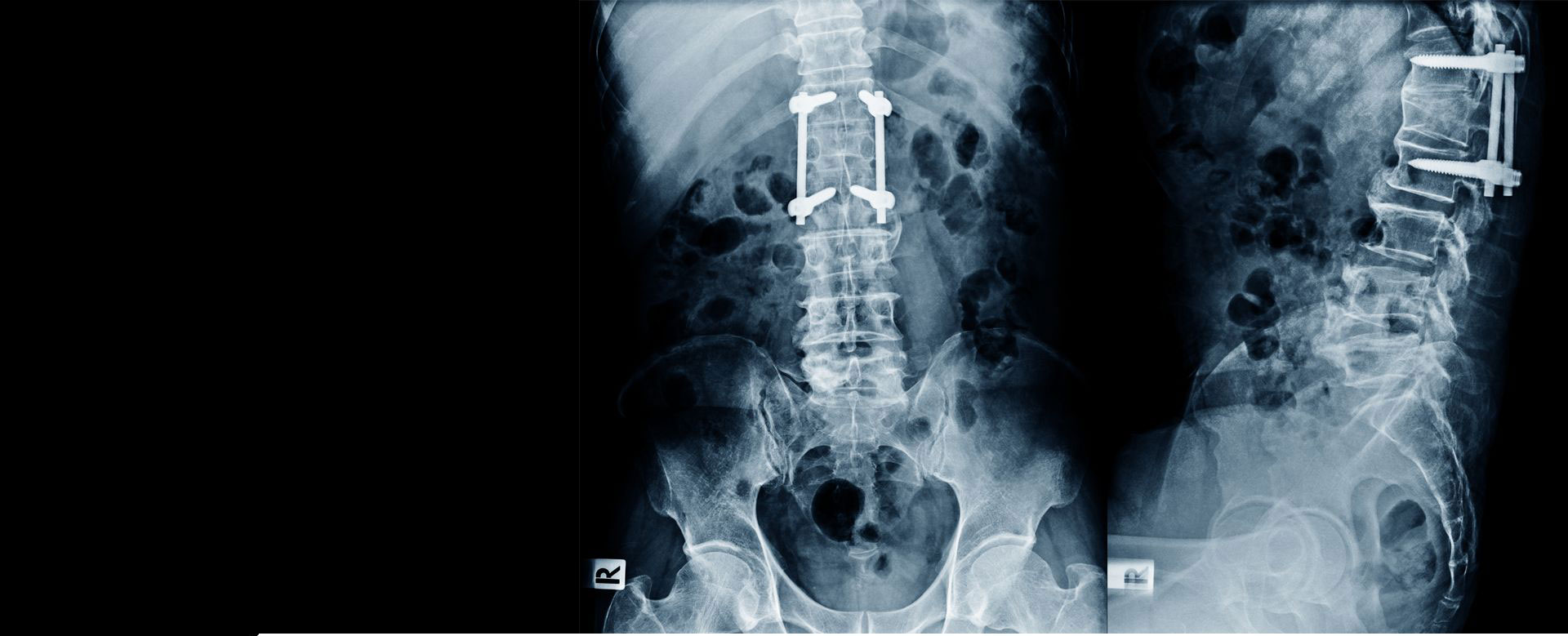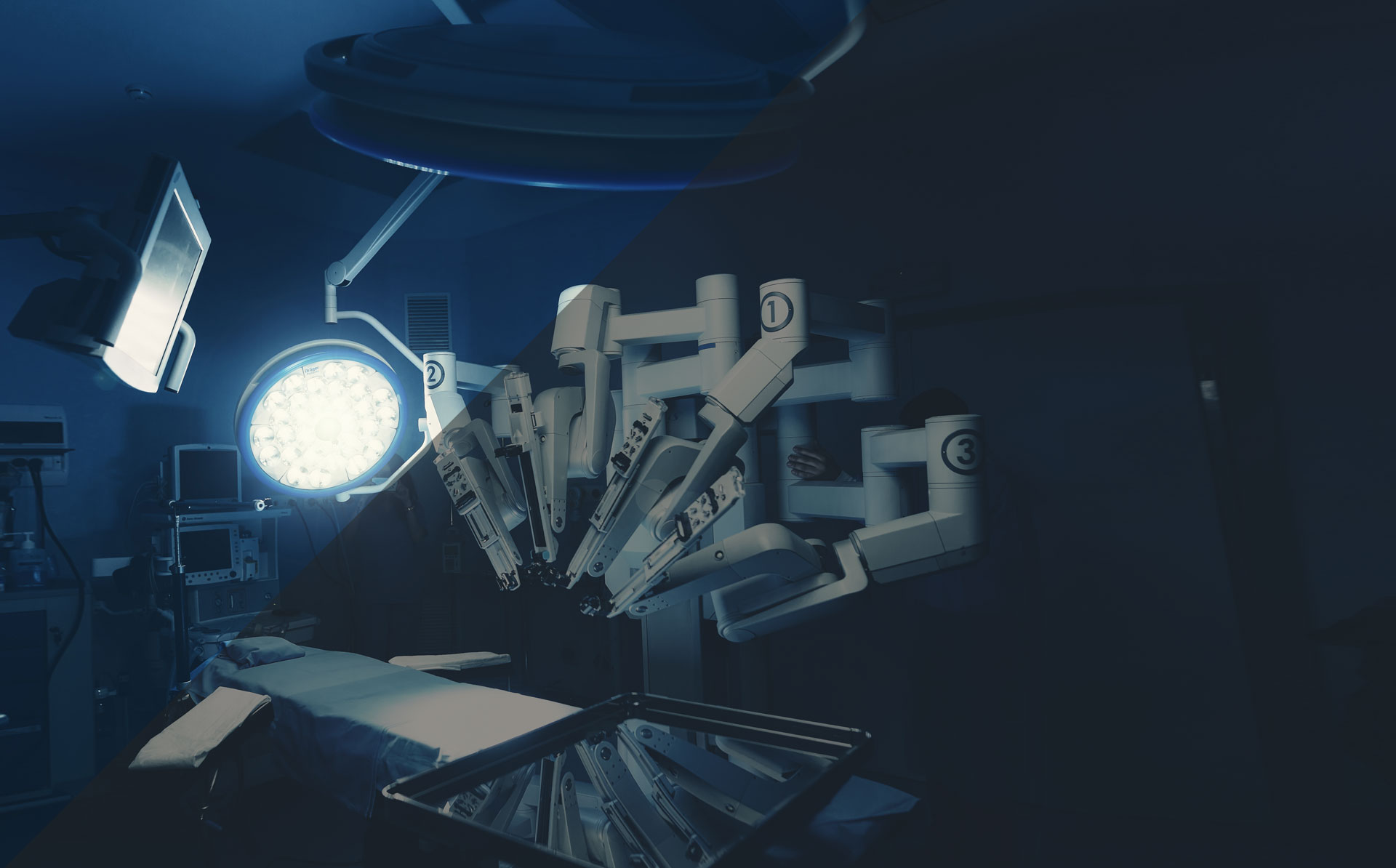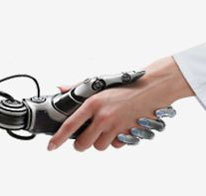Patients looking to
avoid Spinal Fusion

What is a spinal fusion?
A spinal fusion is a surgical technique that joins two or more vertebrae. This procedure can be performed in your neck, middle, or lower back.
When patients imagine an X-Ray showing metal rods and screws in someone’s spine, this is the posterior stabilisation usually associated with a spinal fusion. It might look invasive and scary, but sometimes a fusion is required, and sometimes it can be avoided.
When patients imagine an X-Ray showing metal rods and screws in someone’s spine, this is the posterior stabilisation usually associated with a spinal fusion. It might look invasive and scary, but sometimes a fusion is required, and sometimes it can be avoided.
Why do patients want to avoid spinal fusion?
The spine is a mobile organ, and a fusion is an irreversible interference in the mechanics of the spine. A fusion aims to stabilise the spine by holding it safely in place, addressing symptoms of neurological deficit by restoring height and decompressing nerves, and removing any movement that could be causing pain.
The risks of spinal fusion surgery are:
- AOften invasive with a recovery time of 6+ months
- BSacrifices all movement from that level of the spine
- CIncreased stress on adjoining spine levels, with higher chance for new damage, requiring ongoing fusion extension over time.
We are living in a time with great advancements in motion-preserving spine surgery, and you may be a candidate for these innovative technologies instead.
New Motion-Preserving Spine Surgeries
New Motion-Preserving Spine Surgeries
- 1Artificial Disc Replacement (ADR)
Your spinal discs are positioned between each bony vertebra in your spine. They hold the vertebra together, absorb shock, and act as joints allowing multi-directional controlled mobility of your spine.
Artificial Disc Replacement (ADR) is sometimes called Total Disc Replacement (TDR). This surgical procedure involves removing a bulging or herniated spinal disc in the neck or lower back, and replaced with an artificial disc to restore height and natural movement. The newest ‘Third Generation’ artificial discs are so advanced they can accurately replicate the motion of a healthy natural disc.
More Details
Artificial Disc Replacement (ADR) is sometimes called Total Disc Replacement (TDR). This surgical procedure involves removing a bulging or herniated spinal disc in the neck or lower back, and replaced with an artificial disc to restore height and natural movement. The newest ‘Third Generation’ artificial discs are so advanced they can accurately replicate the motion of a healthy natural disc.
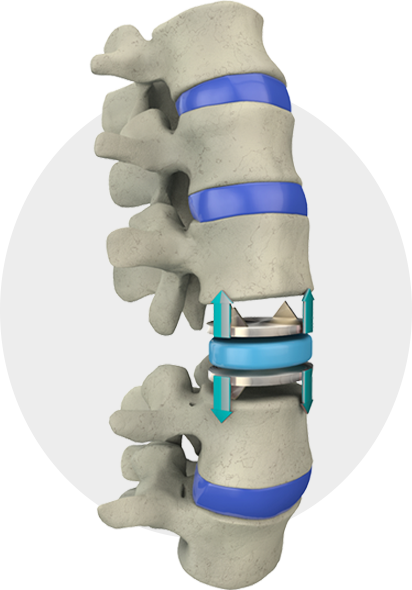
- 2Total Facet Replacement
There are two facet joints located at every level of your spine. Their function is to guide and limit movement of the spinal discs. Sometimes through traumatic injury or wear-and-tear they can become damaged and painful.
Total Lumbar Facet Replacement is a new ground-breaking procedure available from leading groups of spine surgeons. It can be offered to patients wanting a motion-preserving solution who are not a suitable candidate for Artificial Disc Replacement (ADR).
More Details
Total Lumbar Facet Replacement is a new ground-breaking procedure available from leading groups of spine surgeons. It can be offered to patients wanting a motion-preserving solution who are not a suitable candidate for Artificial Disc Replacement (ADR).
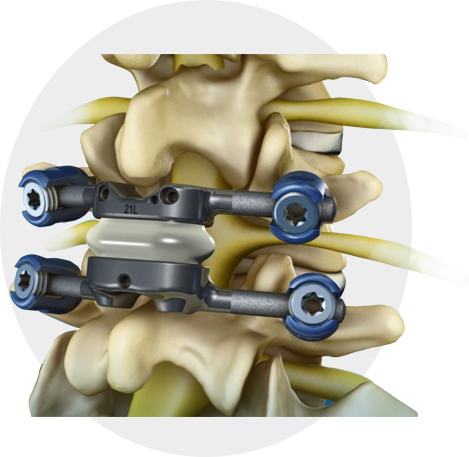
- 3Dynamic Stabilization Systems (DSS)
When faced with a posterior fusion or fixation, some patients can instead receive a DSS system to stabilize the spine and preserve mobility. This Minimally Invasive technology includes flexible titanium rods with two screws and a rotation-stable joint design. It is designed to support load sharing for degenerative discs and facet joints, and the Bonit coating helps accelerate osseointegration and healing.
UPDATE: Spine Connection specialists now offer a new version of DSS called the 'HPS 2.0 Hybrid Performance System'. This enhanced system is suitable for multi-level use by restoring segmental stability while preserving motion, and reducing the mechanical burden on adjacent segments.
More Details
UPDATE: Spine Connection specialists now offer a new version of DSS called the 'HPS 2.0 Hybrid Performance System'. This enhanced system is suitable for multi-level use by restoring segmental stability while preserving motion, and reducing the mechanical burden on adjacent segments.
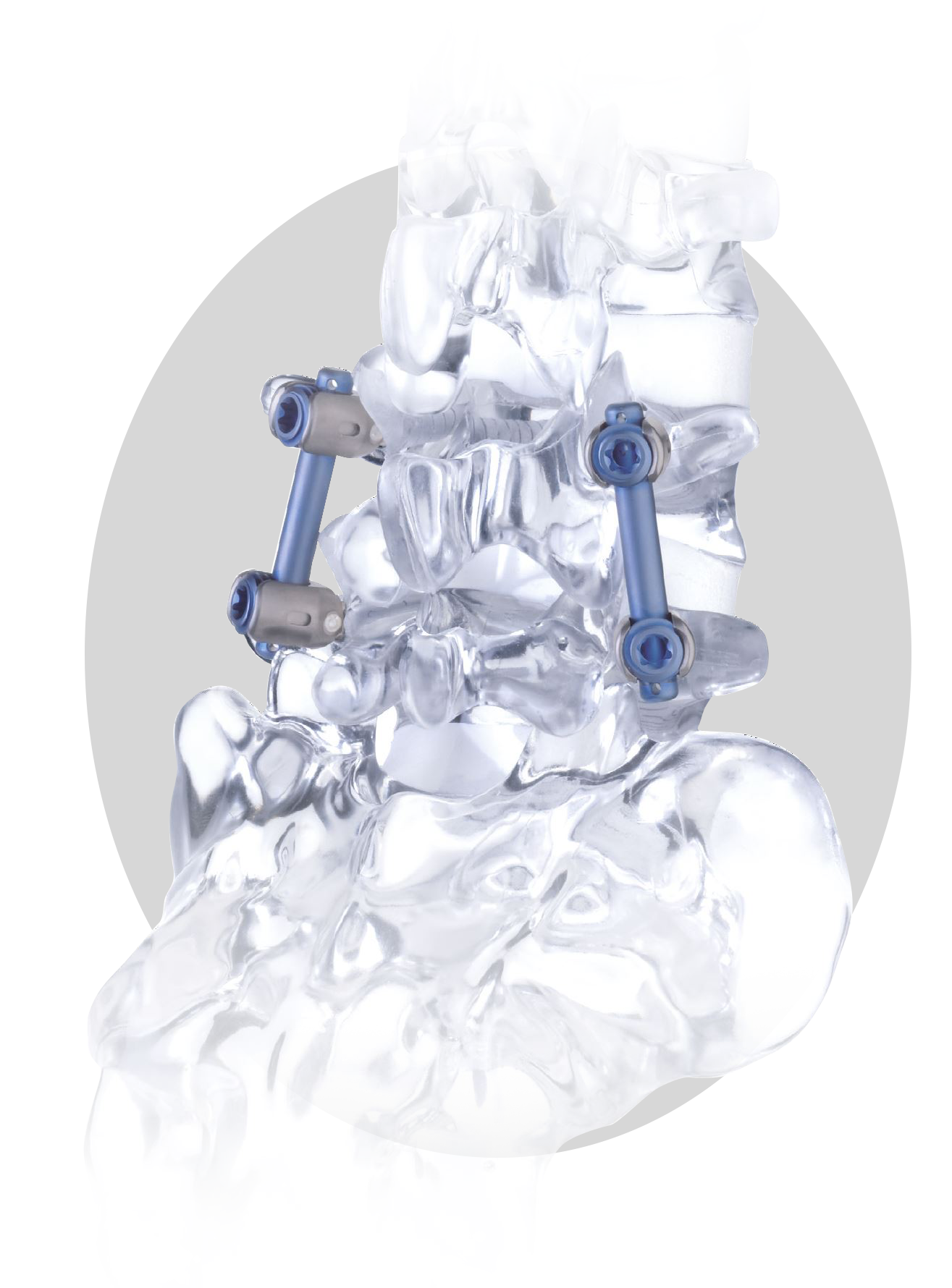
Sometimes a fusion is still the best option
Not everyone is an ideal candidate for a motion-preserving solution. Sometimes restoring full movement to a spine with these implants will cause more pain than before, or cause the spine to collapse further in the wrong direction. In these cases, a reconstructive fusion may be required to decompress the spine, restore full height, and hold it safely in the correct position.
Our Spine Connection surgeons are experienced in all types of surgery, including minimally invasive Anterior/Posterior or 360-degree fusions, disc replacement, facet replacement, keyhole interventions or precise spine fusion with robotic assistance. They are unbiased and will simply recommend the best surgery for your case, and we will ensure all your questions are answered.
Our Spine Connection surgeons are experienced in all types of surgery, including minimally invasive Anterior/Posterior or 360-degree fusions, disc replacement, facet replacement, keyhole interventions or precise spine fusion with robotic assistance. They are unbiased and will simply recommend the best surgery for your case, and we will ensure all your questions are answered.
Advanced Robotic Surgery for Spinal Fusion
Our Spine Connection surgeons at Bumrungrad Hospital in Bangkok are experienced with the latest robotic spine surgery techniques. If a patient requires a spinal fusion with rod and screw fixation, this state-of-the-art equipment offers patients the most efficient and precise surgery possible. This is especially important for patients requiring large multi-level surgeries such as scoliosis correction.
More than 2 million international travelers visit Thailand for elective surgery every year, and our top Thailand specialists are revered by affluent patients from Dubai, Qatar and the UAE, with a growing reputation in Europe and the Asia-Pacific regions.
More Details
More than 2 million international travelers visit Thailand for elective surgery every year, and our top Thailand specialists are revered by affluent patients from Dubai, Qatar and the UAE, with a growing reputation in Europe and the Asia-Pacific regions.
Minimally Invasive (MIS) Spine Fusion
Bumrungrad International Hospital is regarded at the No.1 Hospital for Medical Travellers in the World, with over 1.1 Million+ patients per year, from over 190 countries.
Bumrungrad’s Spine Institute, headed by its director Dr. Verapan Kuansongtham, has been selected by Germany’s Dr. Sebastian Ruetten as Asia-Pacific’s first and only training center for his endoscopic surgery technique. Pioneered in Germany, this approach uses ‘keyhole surgery’ to reconstruct and stabilise damaged spines. Patients benefit from a less invasive surgery, less blood loss and faster recovery.
Dr. Verapan & Dr. Withawin's Endoscopic Workshops at Bumrungrad Hospital attract surgeons from the USA, Australia, China and other countries, and a training course has now been established in China with surgeons from Bumrungrad’s Spine Institute invited to lead the training.
St. Anna Hospital of Germany and The Bumrungrad Spine Institute jointly organize full endoscopic lumbar and cervical spine surgery symposiums three times a year, twice in Germany and once at the Bumrungrad Spine Institute in Thailand.
Our other top specialists in Thailand, such as Dr. Tayard from the Bangkok Hospital's 'Spine Academy' are renowned for the minimally invasive Oblique Lateral Interbody Fusion (OLIF) technique. This new approach is being adopted by 10% of USA based surgeons per annum, and Dr. Tayard has been an instructor surgeon in this procedure for 7+ years.
More Details
Bumrungrad’s Spine Institute, headed by its director Dr. Verapan Kuansongtham, has been selected by Germany’s Dr. Sebastian Ruetten as Asia-Pacific’s first and only training center for his endoscopic surgery technique. Pioneered in Germany, this approach uses ‘keyhole surgery’ to reconstruct and stabilise damaged spines. Patients benefit from a less invasive surgery, less blood loss and faster recovery.
Dr. Verapan & Dr. Withawin's Endoscopic Workshops at Bumrungrad Hospital attract surgeons from the USA, Australia, China and other countries, and a training course has now been established in China with surgeons from Bumrungrad’s Spine Institute invited to lead the training.
St. Anna Hospital of Germany and The Bumrungrad Spine Institute jointly organize full endoscopic lumbar and cervical spine surgery symposiums three times a year, twice in Germany and once at the Bumrungrad Spine Institute in Thailand.
Our other top specialists in Thailand, such as Dr. Tayard from the Bangkok Hospital's 'Spine Academy' are renowned for the minimally invasive Oblique Lateral Interbody Fusion (OLIF) technique. This new approach is being adopted by 10% of USA based surgeons per annum, and Dr. Tayard has been an instructor surgeon in this procedure for 7+ years.
We're here
to help.
Leave your details and we will contact you to answer your questions.
to help.
Leave your details and we will contact you to answer your questions.
Ask Our Doctors
Leave your details and we will contact you to answer your questions. We're here to help.
Join Our Youtube Channel
Watch videos showcasing the latest technologies and surgery techniques, and keep up to date with patient stories from around the globe.


